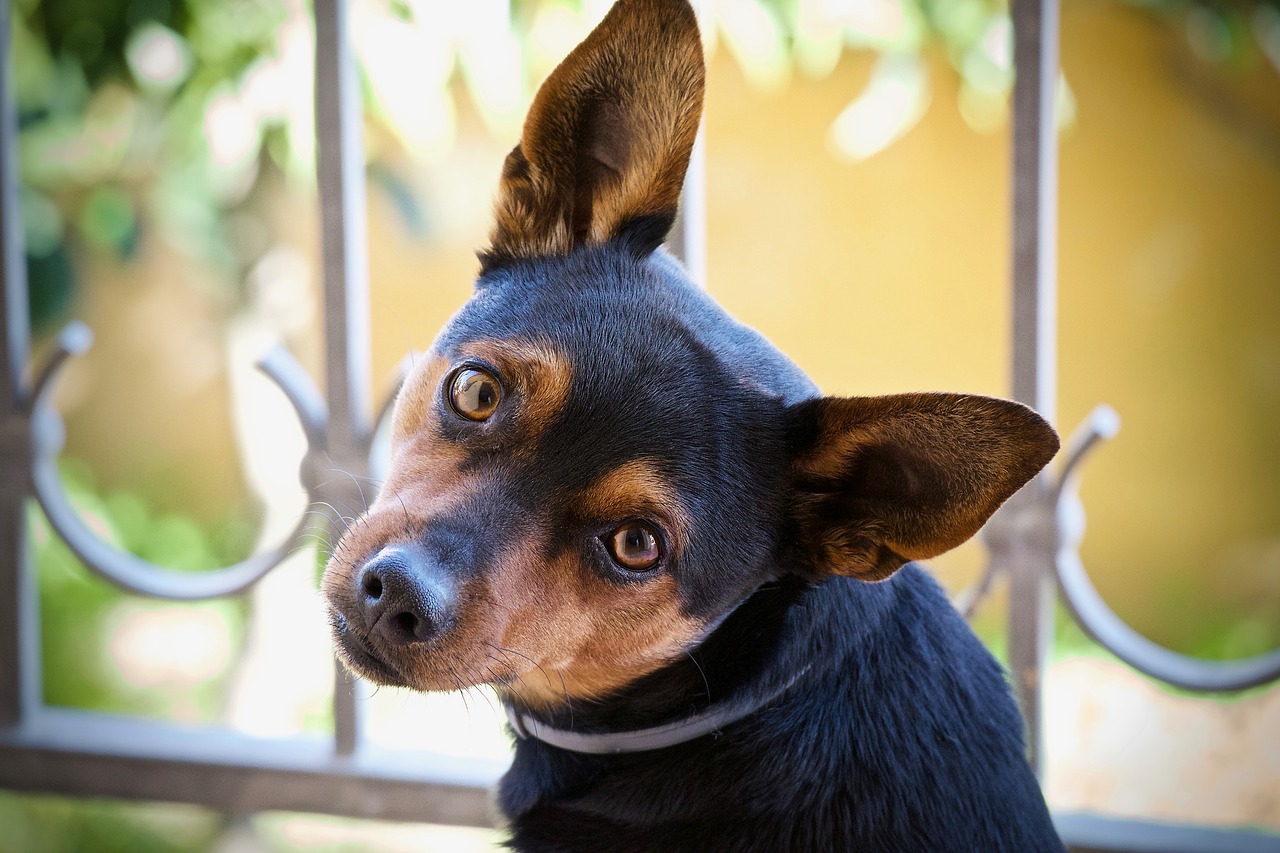Homeopathic medicine has always been around, but recently, it has become very popular. Chances are, you, or at least someone you know, uses essential oils. I certainly do!
Hi, my name is Megan! I’m a dog lover with a degree in science, so I love studying homeopathic alternatives for my pets.
Over the years, I have raised dozens of dogs. Most of the time, I had at least three dogs at once; thanks to this, I was always looking for healthy but cheap alternatives for simple problems.
The best homeopathic medicines I have found are essential oils.
With all the available oils, it can be hard to know which ones are not only safe for your dogs, but useful. Not sure where to start?
I’m here to help you understand essential oil basics and how to use them for preventing illnesses, fleas, and ticks.
What are Essential Oils and Their Benefits?
If you’ve never heard of essential oils, you may not know exactly what they are. That’s okay! We all have to start somewhere.
Essential oils are compounds extracted from plants through distillation. The most common method of distillation is through the use of steam.
Pure essential oils can be very dangerous, however, so they are often mixed with a carrier oil – substances like coconut – which is my personal favorite carrier oil because of its availability and smell – jojoba, avocado, or grapeseed oil.
Essential oils are often used in aromatherapy – whether that be through inhalation or topical application.

Essentials oils have an abundance of beneficial effects on your bodily systems, but ingestion can be harmful.
As a college student, I have a lot of problems with headaches. In order to combat this pain, especially during finals, I use a peppermint and frankincense mixture.
A few drops of each oil into a container of coconut oils does wonders for my headaches when I rub it on my temples.
It didn’t take long before I connected the dots and realized that essential oils could help my dogs too! Now, before I started dousing my dogs in the closest possible oil, I made sure to do my research.
Turns out, a lot of professionals are actually turning to essential oils. A lot of veterinarians are prescribing to more holistic approaches, including essential oils.
Essential oils can treat an abundance of problems – both exterior and interior – in dogs. Essential oils can treat skin issues, anxiety, and even ticks and fleas.
How Oils Treat Ticks and Fleas
Fleas and ticks are pests that can cause our furry friends a lot of problems. If an infestation becomes severe, it can even begin to affect us.
Luckily, before you spend hundreds of dollars on repellents and medicines, essential oils can help prevent and treat ticks and fleas.
Different essential oils do different things for your dog. While some are used as strictly a natural repellent, others, like lavender, also work to help sooth irritation and skin problems caused by infestations.
These work mostly by producing an aroma that is unpleasant for pests, but some essential oils, like lemongrass, actually have natural chemical compounds that repel ticks and fleas.
Essential oils can also treat a dog that already has fleas. Peppermint oil kills flea larvae, while an abundance of other oils can be used to treat the irritation and inflammation that are caused by flea bites.
The Top 5 Best Essential Oils for Flea and Tick Prevention
1. Healing Solutions 100% Pure Lavender Oil
Lavender oil is probably of the most common essential oils. Even if you aren’t a huge fan of oils, you may have noticed that a lot of products you use on a regular basis have lavender oil as an ingredient.
I picked this one to be on the top of the list for a very special reason, however.Dogs are a lot more sensitive to essential oils than humans are.
Because of this fact, it’s important to make sure that the oils you are using are safe. This oil is definitely on the pricey side but goes through a lot of testing to make sure it is high quality.
Healing Solutions’ lavender oil is kosher and, more importantly, FDA certified.Lavender oil is one of the best essential oils for your dog.
Other than working as a pest repellent, lavender oil also soothes your pet’s skin by helping with irritation and itching; treats minor wounds; deodorizes; and helps with anxiety.
To incorporate lavender oil into your life, you can add a few drops – no more than 10 – to your dog’s shampoo. For a constant effect, try diffusing lavender oil in your home.
2. ArtsNatural 100% Pure Lemongrass Oil
This lemongrass essential oil is 100% pure and therapeutic grade. While it isn’t FDA approved, it’s still a safe option for your dog.
Like I mentioned earlier, lemongrass oil is a special oil. While the smell is unpleasant for pests, its chemical compounds also work as a repellent.
Lemongrass contains citral and geraninol. These active ingredients by themselves are great tick and flea repellents.
Like lavender oil, you can diffuse lemongrass oil around your home for a constant repellent.
To use directly on your pet, add 5 drops to a full container of water – for those familiar with dilutions, use an 80%-90% dilution – and spray into your pet’s coat and bedding. Avoid spraying into your dog’s face.
3. Pure Body Naturals Peppermint Essential Oil
This oil is certified by the EVS – Essentials Validation Services – so you’re guaranteed to get a good product.
This is important because dog’s have so many oils that can harm them. This certification can ease your mind by letting you know you don’t have to worry about any harmful filler oils.
It also comes with an eyedropper to make dilutions easier.
The first thing to know about peppermint oil is that it doesn’t repel fleas – it kills flea larvae.
This essential oil is good if your pet already has fleas and you want to work on removing them. It also relives the irritation and inflammation caused by flea bites.
This is the oil I used the most – on both my dogs and me. My dogs spend a lot of time outside, so fleas are inevitable. I would dilute a few drops of peppermint oil in coconut to create a salve that I would rub onto irritated areas.
Using this along with also regularly using the other essential oils on this list helped me get rid of almost all of my dog’s fleas.
While using this routine, I would only find a handful of fleas around their face that I could easily remove.
Peppermint essential oil is also good for dogs with sore muscles, chronic fatigue, or respiratory problems. While some illnesses absolutely require proper medication, peppermint oil can help relives minor symptoms.
4. Edens Garden Rose Geranium Oil
This is one oil you have to be particularly careful with. I like this brand because it’s pure rose geranium oil
A lot of times, this rose geranium oil is blended with mixtures that could be harmful for dogs. With this product, I don’t have to worry.
Rose Geranium oil is probably the best oil for dog parents who aren’t quite used to dilutions yet. Rose geranium oil is one of the only – if not the only – oils that you can directly use on your dog undiluted.
This is why it’s important to pick a product that is pure rose geranium oil and nothing else.
Rose geranium oil is a tick and flea repellent. To use it, apply one drop – you may want an eye dropper – behind each shoulder blade and at the base of the tail.
Since this oil is one of the safest, feel free to use in dilutions like a spray or your dog’s shampoo.
5. Nature’s Oil Cedarwood Essential Oil
Cedarwood oil is more than just a great pest repellent. This particular brand’s oil is diffusible; when cedarwood is diffused into the air, it can act as an antiseptic in the air.
Along with repelling ticks and fleas, cedarwood essential oil can help with coughs, lice, anxiety, skin and coat problems, and circulation problems.
If you want to apply cedarwood oil directly to your dog, you’ll have to dilute it. My favorite way is, like with the peppermint essential oil, create a salve sing coconut oil.
I have found this is one of the absolute best oils for pest prevention, and it’s defiantly the best if you are like me and have multiple dogs at once.
Safety Tips
Like with everything, safety is the most important thing.
Before incorporating essential oils into your pet’s heath and wellness routine, here are a few things to remember.
Oils that are safe for dogs aren’t necessarily safe for cats
Some oils, like peppermint and chamomile, are safe for your dog to use but not your cat.
Make sure to do your research before using an oil in your home.
Let your dog decide if they like the oil
Like humans, dogs have preferences.
Since they have such sensitive noses, it’s important you let them decide if they like the oil before you apply it to them or their surroundings.
Let your dog smell the bottle – with the lid on – of the undiluted essential oil before applying. If your dog makes clear signs of displeasure, try a different oil instead.

Be careful how you use your oils
Oils can be dangerous, so you need to seek precaution. Make sure you dilute your oils, especially when you are using them on your pets.
If you are using your oils in a spray, make sure to spray in a ventilated area. Never spray into your dog’s face.
Do your research
Not all oils are safe for dogs, so you have to be extra careful when buying essential oils.
It is important to make sure your oil is 100% pure, as a lot of oils are often mixed with filler oils. One of the most common filler oils is anise, which is dangerous for dogs.
Oils Not Safe for Dogs
Like how some oils aren’t safe for cat, some aren’t safe for dogs or any animal.
Experimenting with oils can be fun, but it’s important to make sure that you aren’t putting your pet in danger. Here are just a few oils that aren’t safe for animals:
- Clover
- Garlic
- Horseradish
- Bitter Almond
- Juniper
- Wormwood
- Mustard
- Tea Tree
- Wintergreen
These oils, along with other less common ones, can cause a lot of problems with your pets, and some may even be fatal. Do your research. If you aren’t 100% sure, talk to your vet before using an oil.
Final Thoughts

Different essentials oils can produce a wide variety of benefits for dogs. The most common use is as a pest repellent, but oils can help with skin irritations, anxiety, and other problems.
The most important thing is to talk to your vet. Essential oils are helpful, but they can’t replace medications.
Feel free to ditch your flea repellent for essential oils, but exercise caution with other conditions. Do your research!
When picking out oils, make sure to pay close attention to the ingredients, especially in the case of oils like rose geranium.
Most essential oils are designed for humans, so they are often mixed with oils potentially harmful for dogs.
I think that essential oils are a great alternative for dogs, however, especially when you have multiple dogs.
Essential oils are homeopathic and cheaper than most tradition pest repellents, and they have an abundance of other benefits as well. Not too mention, essential oil alternatives tend to smell better than traditional pest repellents.
Switching to essential oils for your pets may be difficult at first, but I hope that you grow to love them as much as I do!
And, if you’re confused on how to start, hopefully this guide will help you make the big switch.





